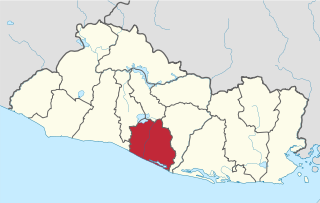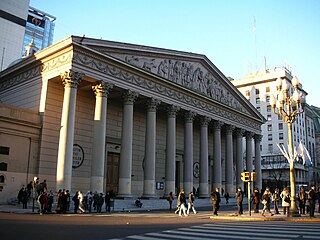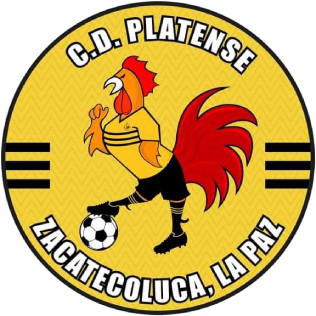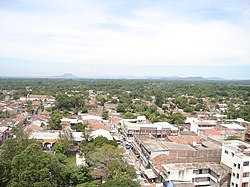
El Rosario is a municipality in the La Paz department of El Salvador.
San Juan Tepezontes is a municipality in the La Paz department of El Salvador. Its name is a Hispanicization of a Nawat term meaning "many hills." It was incorporated in 1945. Its population as of 2004 was 3,269.

San Rafael Obrajuelo is a municipality in the department of La Paz, El Salvador. As of 2017 it was estimated to have a population of 11,403.

San Pedro Nonualco is a municipality in the La Paz department of El Salvador.
Santiago Nonualco is a municipality in La Paz department of El Salvador.

Zacatecoluca is the capital municipality of the La Paz Department of El Salvador.

The Catholic Church in El Salvador is part of the worldwide Catholic Church, under the spiritual leadership of the Pope in Rome and the Episcopal Conference of El Salvador. There are almost 5 million Catholics in El Salvador. The country is divided into eight dioceses including one archdiocese, San Salvador. The Constitution explicitly recognizes the Catholic Church and it has legal status.

The Metropolitan Archdiocese of Buenos Aires is a Latin Church ecclesiastical territory or archdiocese of the Catholic Church in Argentina. It is a metropolitan archdiocese with 13 suffragan sees in the country, including two Eastern Catholic eparchies.

Anastasio Aquino's Rebellion was an uprising led by Salvadoran indigenous leader Anastasio Aquino in El Salvador during the time it belonged to the Federal Republic of Central America.

Club Deportivo Platense Municipal Zacatecoluca, usually abbreviated to just Platense, is a Salvadoran football club based in Zacatecoluca, the departmental capital city of La Paz Province, they currently play in the Primera División. The club play their home games at the Estadio Panorámico de Zacatecoluca, which has a capacity of 10,000

Christianity is the dominant religion in El Salvador. The Catholic share of the population is on decline while Protestantism is experiencing rapid growth in recent decades. The Spanish Conquistador Pedro de Alvarado named part of the territory of modern day El Salvador after Jesus Christ - San Salvador. The territory's name, including the province of San Miguel, was later extended to the Provincia De Nuestro Señor Jesus Cristo, El Salvador Del Mundo, shortened to the Republic of El Salvador, or Salvador, during the post-Federal Republic period and subsequently settled on as El Salvador.
San Juan Nonualco is a municipality in the La Paz department of El Salvador. According to the official census of 2007, it has a population of 17,256 inhabitants, although for the year 2016 it is estimated that 19,336 inhabitants live in the city.
The La Asociación Departamental de Fútbol Aficionado is the fourth tier of football in the Salvadoran football league system.
The 2022–23 Primera División de El Salvador, also known as the Liga Pepsi, is the 24th season and 46th and 47th Primera División tournament, El Salvador's top football division, since its establishment of an Apertura and Clausura format. C.D. FAS and TBD are the defending champions of both Apertura and Clausura tournaments respectively. The league will consist of 12 teams. There will be two seasons conducted under identical rules, with each team playing a home and away game against the other clubs for a total of 22 games per tournament. At the end of each half-season tournament, the top six teams in that tournament's regular season standings will take part in the playoffs.











